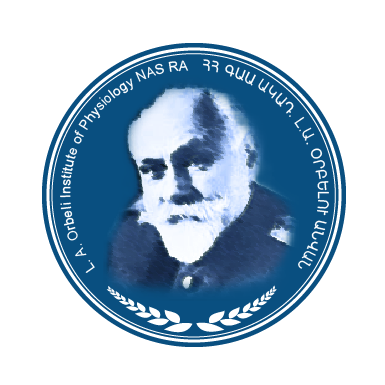- Home
- About us
- Laboratories
- Central Nervous System Physiology
- Central Nervous System functions compensation Physiology
- Immunology and Tissue Engineering
- Smooth Muscle Physiology
- Toxinology and Molecular Systematics
- Sensorimotor Integration
- Laboratory of Histochemistry and Morphology
- Human Psychophysiology
- Integrative Biology
- Purification, Certification and Standardization of Physiologically active substances
- Neuroendocrine Relationships
- Distance Լearning Center
- Laboratory of Hyperspectral Imaging of Surgical Targets
- Biophysics Lab
- News & Events
- Master's Program
- Research
- Councils
- Contact Us
- OIPH Docs
L. A. Orbeli Institute of
Physiology NAS RA
| Laboratory | Head of Laboratory | Research field |
|---|---|---|
| Central Nervous System Physiology | Levon Manvelyan | The main direction of scientific activities in the laboratory of CNS focuses on the comperative physiological study of movement activity control in the organism. The uniqueness of the vestibular and cerebellar nuclei of amphibians is their significant modification in response to the environmental changes (partial or complete transition to land) and development of tetrapod body. |
| Central Nervous System functions compensation Physiology | John S. Sarkissian | Plasticity of morphofunctional organization and reorganization of the CNS under conditions of protective impact of biomodulators in cases of acute and chronic nuerodegeneration of specific and nonspecific origin. |
| Immunology and Tissue Engineering | Zaruhi Karabekian | Generate immuno-compatible differentiated stem cells and to prove that these cells are capable of re-populating de-cellularized scaffolds. Second is to generate an assortment of mesenchymal stem cells from non-related individuals that can be turned into many solid organ tissues and be compatible with a large percent of human population. |
| Smooth Muscle Physiology | Knarik Kazaryan | Understanding the nature of spontaneous activities of smooth-muscle tissues, in particularly, the ureter’s and uterine activities. The existence of latent rithmogenic cells along with the main active pacemakers was shown. Coordination mechanisms of activities from different areas, which are providing peristaltic activity of entire organs, are studied. |
| Toxinology and Molecular Systematics | Naira Ayvazyan | Studying the structure-functional properties of animals’ and plants’ venom peptides are of considerable theoretical interest for understanding the mechanisms and pathways of molecular evolution, designing novel therapeutic agents, and developing antivenom production strategies. The investigation of natural venom (and particularly the snake venom’s) influence on organism is a vital question today for Armenia both in case of safety of population and in aspect of using of snake toxins in pharmacology. |
| Sensorimotor Integration | Vaghinak Sarkisian | 1.Problems of CNS plasticity: Electrophysiological, biochemical, neurohistochemical and molecular mechanisms of different nonspecific (vestibular injury) and specific (Alzhemer’s and Parkinson’s diseases) neurodegenerative disorders. Synaptic mechanisms of different biomodulators’ neuroprotective effects upon vestibular compensation 2. Sport Physiology: investigations directed to development of methods of exercise physiology and problems of physical education, as well as systematic approach and integrated training programs. |
| Laboratory of Histochemistry and Morphology | Margarit Danielyn | Development of the new methods, providing wide opportunities to study histochemical and morpho-functional state of cellular structures of the brain and other tissues of the organism in norm and pathology. Histochemical studies of the morphofunctional state of the cells and the microvascular bed of the rat brain in the dynamics of stress and alcohol consumption were carried out, as well as studies of neurodegenerative diseases and the search for therapeutic agents for the treatment of these diseases on experimental models. |
| Human Psychophysiology | Aleksandr Khachunc | The laboratory is engaged in studies of the functional state (FS) of human brain, which is the actual problem of psychophysiological researches. To determine more informative criterions for many-sided assessment of FS new approaches and methods with the application of up-to-date technology are devised. |
| Integrative Biology | Rafik Sargsyan | Investigations on searching alternative methods of assessment of physiological state of biological systems led to the development of new apparatus complex "Bioscope" capable to react distantly on the approaching of living objects (plants, animals, human). The device is simple in design, and its working principle is based on evaluation of the intensity of light scattered from the sensor - the glass plate covered by a thin opaque material. |
| Purification, Certification and Standardization of physiologically active substances | Armen Voskanyan | Investigation of mechanisms of venoms influence on CNS and BHS, R&D of nonspecific antitoxic remedies against hemorrhagic venoms. Venoms certification and development of new express methods of venoms identification. |
| Neuroendocrine relationships | Vergina Chavushyan-Papyan | Synaptic activity of neuronal networks involved in memory processes in neurodegeneration induced by bilateral ovariectomy. Microelectrophysiological methods were used to assess the effectiveness of synthetic estrogen hormone replacement therapy and medicinal plant extracts. |
| Distance Learning Center | Analysis, design, development and implementation of teaching-learning strategies and content with context to support a wide range of business and educational goals and objectives, teaching-learning formats including classroom- and web-based professional development with an emphasis on distributed learning environments using asynchronous and/or synchronous systems and Web technologies. |



